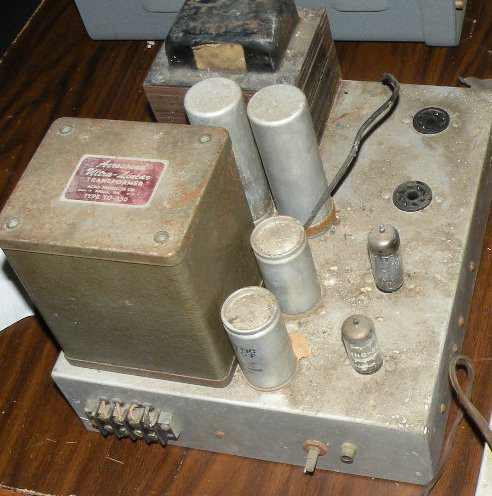
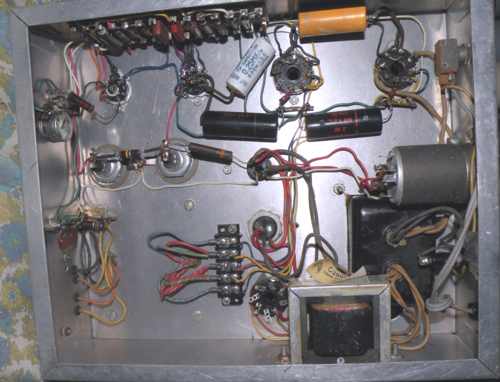
In addition to boatanchor receivers and transmitters, I occasionally enjoy working on tube audio amps. Here is one that had been gathering dust and dirt for some years before I picked it up at an auction. The construction quality and clean underside appealed to me as well as its top-of-the-line Acrosound TO-350 ultralinear output transformer.


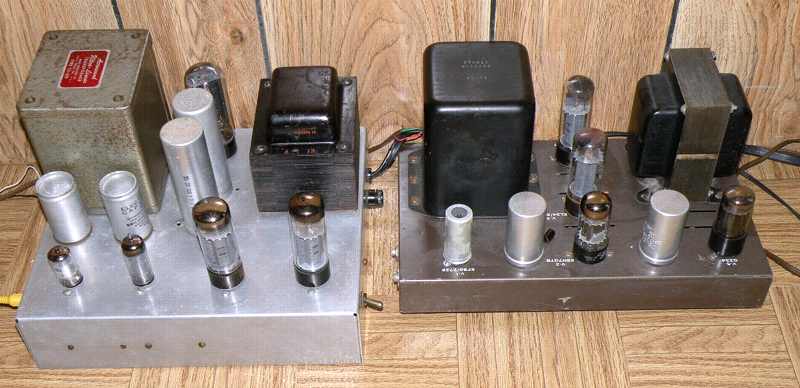
The circuit varies from the HF-35 in that the coupling caps to the output tubes are larger 0.5 MFD in place of 0.1 in the Eico. Other circuit variations are the use of a choke in B+ filtering and 600 volt non-electrolytic caps as the initial power supply filters. Both the power transformer and the output transformer were obviously heavier duty than those in the Eico.
Researching the circuit a bit more led me to the Mullard 5-20, the amp upon which the Eico HF-22, HF-35, as well as the fixed bias versions, the HF-50 and 60, appear to be based. The Mullard 5-20 had the larger coupling caps as well as a similar approach to B+ filtering as the homebrew. However, neither the homebrew amp nor the Eico HF-35 use the 1 K ohm series resistors in the Mullard 5-20 screen grid circuitry. Both connect directly to the 43% ultralinear output transformer tap.
Early checks and repairs
The amp was vacuumed and given a thorough scrubbing with waterless hand cleaner. As expected, the aluminum chassis cleaned up quite well. The tube sockets and pins and the volume control were cleaned with deoxit. Output tubes were not yet installed. The power supply filters were reformed and tested with an external power supply (Heath PS-4). One of the filter caps was replaced. A three-wire power cord was installed with a new terminal strip. After this, a 5U4GB rectifier was inserted and two sets of 4 each C-7 bulbs in series were clipped to the B+ line and ground as a load test. AC power was ramped up slowly using my isolated variac. The power supply test provided a bit over 480 volts of B+ with the lamp load of about 90 milliamps with 115 VAC input.
Before inserting output tubes, I checked voltages at the coupling caps and output of the phase inverter. Voltages similar to those listed in the HF-35 Eico manual were expected. One of the plate voltages from the phase inverter was far from the expected value. I quickly determined that the grid to ground capacitor in the cathode coupled ("long tail") inverter was probably leaky. That cap which is 0.25 MFD in the Eico and Mullard circuits, is critical to proper operation of the phase inverter. Replacing it solved the problem.
I then inserted a known good pair of EL-34 output tubes, injected a signal, and ramped up the variac. The amp performed as expected. I checked for proper balance in cathode current using my handy little Seco HC6 cathode-break meter. Both tubes were drawing a proper and equal amount of current.
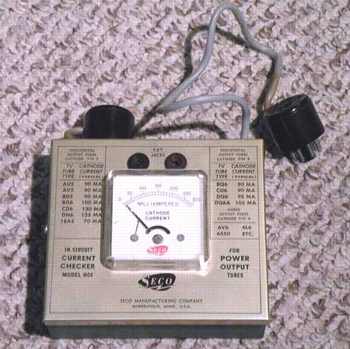
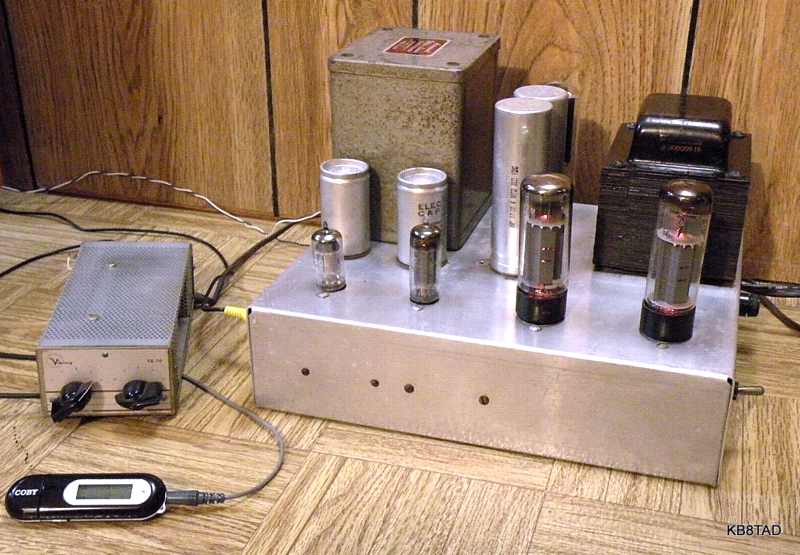
Performance
Although the judgement is subjective, the music I heard was excellent with all the reserve power one could ask for. The Mullard circuit is known for very low distortion. This amp is as distortion free as any tube amp I have ever heard. It's no wonder that the Mullard circuit which dates from the early 1950's was used by Eico and can still be found today in new tube amp designs.
Eico HF-35 schematic and manual
The Eico HF-35 manual can be found at Abeltronics in the UK along with a variety of other audio manuals. An excellent resource.
Details of the Mullard 5-20
More information on the Mullard 5-20 amplifier and circuitry can be found on this site. hosted by the British National Valve Museum. Here is Chapter 3 of the Mullard Hi-Fi book in which the circuit is published detailing the design criteria.
Follow-up, nearly identical schematic
Further research turned up the Dynaco "Improved Mullard 30 Watt Amplifier" circuit as published in the Dynaco catalog. The Homebrew Mullard nearly duplicates that schematic with, of course, substituting the more potent Acrosound TO-350 which has the same 6600 ohm impedance as the Dynaco 420 output transformer in the schematic but significantly higher power handling capability. The full Dynaco catalog as well as the Acrosound catalog and lots of other transformer catalogs can be found at this site.
11-07-09
An Eico HF-12 amp and HFT-90 FM tuner were the previous items on the bench.